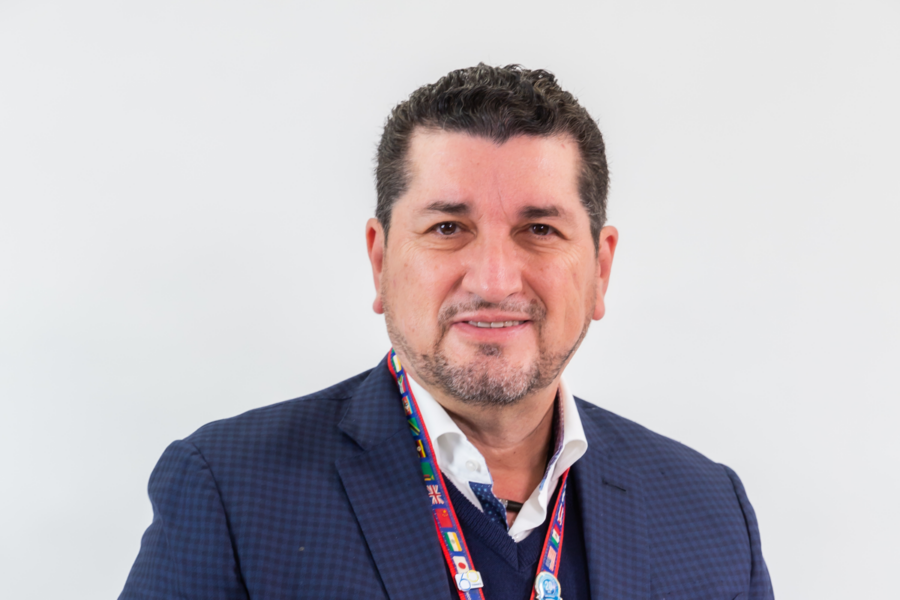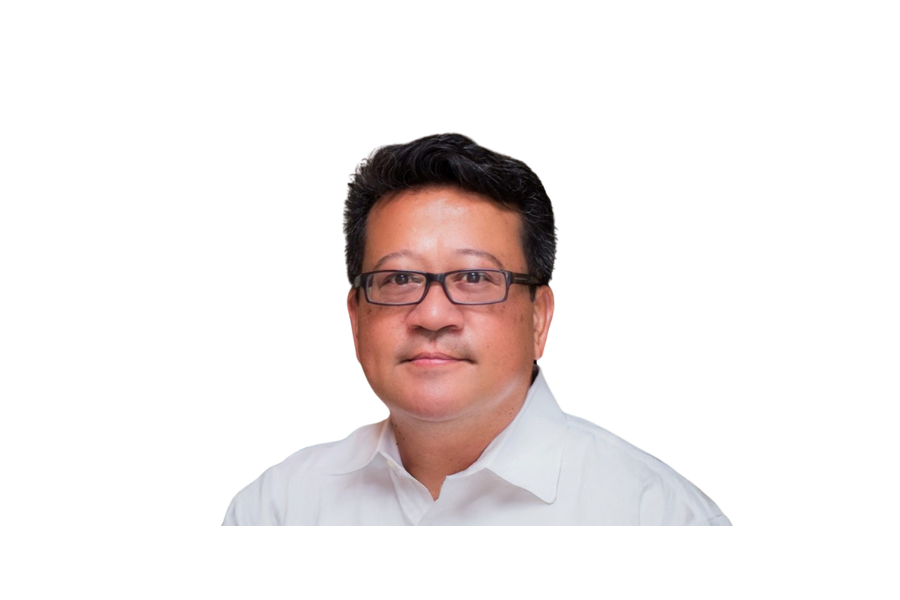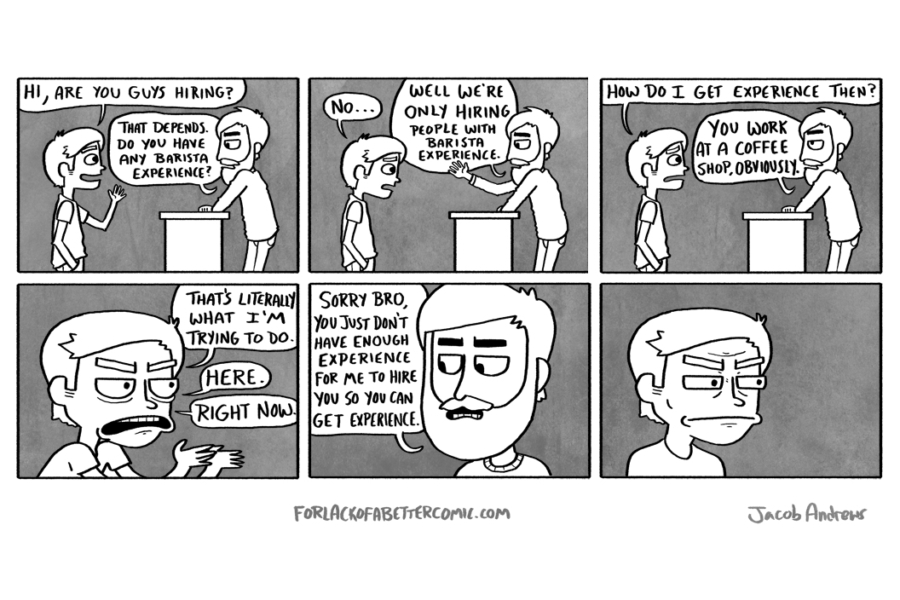Key Takeaways
- Piecemeal solutions are a dime a dozen. HR leaders are more receptive to providers who offer a more holistic approach to helping them solve their challenges.
- It’s tempting, especially for young entrepreneurs, to reinvent everything. But sometimes you need to build on the foundation of the good work that has already been done.
- Walmart de México y Centroamérica developed an internal labor environment diagnostic tool that provides a detailed overview of the culture across their 3,000 stores.
For our next People Matters interview we spoke with Eduardo de la Garza, Chief People Officer of Walmart Mexico and Central America. He joined Walmart after over 32 years rising the ranks at PepsiCo and is now responsible for more than 230,000 associates throughout six countries.
In this interview, Eduardo shares how he thinks about leading digital transformation for one of the largest employers in the region, the role technology plays, and how to keep customers and employees at the center of his work.
This interview has been edited for clarity and brevity.
Can you share a bit about your journey into HR?
I’ve been on this journey for 37 years, but actually I joined HR by mistake! I am originally an industrial engineer with an MBA. I was invited by a retail company to establish a productivity center that was focused on improving efficiency of their product development department. But the role ended up more focused on change management and training, so I started moving into that arena.
I then had an opportunity to work at PepsiCo for almost 32 years holding 21 different positions across different areas. In 2018 I was invited to join Walmart to lead Human Resources for Mexico and Central America. Currently, I am responsible for over 230,000 associates throughout six countries, and I can say it is a great privilege to be able to lead the People function.
What are some initiatives or programs you’re proud of during your time at those two large companies?
I’ll have to say that I’ve learned a lot more from my failures than from my success. Let me share with you two examples.
The first experience I want to share was at PepsiCo, when we were consolidating two of the most important company brands. One was the savory snack business unit and the other was the cookies business unit. We started with the consolidation of the two companies to become PepsiCo Mexico Foods (PMF). We even had a third sister-company which was beverages (Pepsi) that wasn’t aligned with the others business-wise, so we launched something called “Power of One,” which focused on consolidating these three companies into one.
This was a nine-month journey. The HR team was instrumental during the transformation because it required analyzing people-related processes, systems, and practices of each business unit to define the best PMF processes. Some roles were consolidated, and people were relocated. With the customer at the heart of the strategy defined so they could experience the Pepsi flavor through snacks, cookies, and beverages in a seamless way, we saw an increase in employee engagement and productivity.
Now at Walmart, we are transitioning from a traditional retail store to an omni-channel and solutions organization with total focus on the customer and the associate. This requires a lot of work from the HR perspective, because we had to reimagine the skills and the talent with the mindset needed to achieve this profound transformation. For example, for people who normally do sales at the stores, they now must think in an omni-channel way. We had to look for talent with deep digital knowledge. We also had to upskill our associates to learn this new way of working and to respond to the needs of customers so they can teach them on site how to use our online platforms to transform them into omni-channel customers. This has been a multi-year transformation.
Can you share your thoughts on creating training programs for frontline employees versus white-collar workers?
For our frontline workers, we focused on creating an associate-centric organization and in order to achieve this, we had to change our salary scale, benefits, capability building, among others. Our goal was to ensure a great experience for all associates through the wide array of programs we offer, regardless of their role: from a cashier at the store or a forklift driver at a distribution center to a finance manager at our corporate offices.
For example, in terms of cash flow for our frontline associates we started offering weekly payments instead of biweekly because Mexico is a cash-based economy. We started providing transportation, uniforms, and most importantly, education to all of them. We have provided access to elementary school or high school for the people who were not able to complete those grades. By offering them education, they are able to move into new roles with higher responsibilities. Thanks to these training programs, last year we had around 27,000 promotions within our frontline associates.
For our white-collar workers, we launched an initiative that eliminates titles and focuses on the role. We want to focus more on what associates can do and their skills. We also trained them in agile, digital, leadership and collaboration.
We also now have more internal mobility within the company. Before we had 3% of people moving around in the home office. This number is now 12%. We are currently moving internally 4X to 5X more. And it’s not just moving to another role because you want to move, it’s because people are looking for learning new and more challenging experiences. For example, our Tribe Lead of Compensations and Benefits was leading Investor Relations. We want to provide opportunities so associates can reach whichever career they want, but they need to get prepared.
People often ask me “what can I do to be a director or a VP?” and I tell them that way of thinking has disappeared. You need to ask me “what do I need to learn to keep growing” or “what do I need to be capable of” to move into a new role.
You are responsible for over 230,000 associates. How do you think about developing pathways for upskilling and career mobility at such a large scale?
Recently, we had a meeting in one of our distribution centers in Monterrey. It’s a highly automated warehouse with 2,300 associates. People showed excitement by doing their job and I asked them how they do that, and one person said:
“When I arrived here, I only had elementary school education. Now, I am certified to operate and drive large machinery. Initially, I was nervous I might not be able to keep growing in this distribution center, but I’ve been receiving training and support from my leaders.”
At the beginning, she didn’t even know how to use an iPad or a smartphone, but now she has become more technically knowledgeable, and she has enjoyed the learning journey.
In 2022, we invested more than 5 million hours in training, which included not only the basic training all associates receive, but we also taught them digital skills, such as data analysis or end-to-end processes and learning to understand how to impact the NPS (Net Promoter Score) to satisfy our customers.
The challenge was to develop a more collaborative and team-building mindset to change a very large, traditional hierarchical organization to respond in a more agile way to our customers’ needs and expectations. This has not been an easy task. Therefore, training has become essential.
What are technology tools that your team has gotten a lot of value from?
We leverage technology now in many of our processes. For example, we consolidated our hiring process to have a more centralized and efficient process that used to be done store by store. We hire many associates monthly, so we needed to centralize and move away from traditional sources of recruiting. Now we find people online that want to apply for a certain job for example by using Facebook.
We are also developing a tool that performs a diagnostic of the labor environment. It measures quality of management, quality of life in the store, preferences in training, etcetera. It consists of 12-14 questions that are answered on a weekly basis and as soon as that information comes out the store managers can see if the store is green, red, or yellow and take appropriate actions. You can also get a sense of where you need to focus your attention. Before that, it was impossible to have such a detailed overview across 3,000 stores. We now correlate those green to red scores with whether stores will meet their sales objectives.
We are now also in the process of building a platform using artificial intelligence where associates can see all competencies and experience needed to apply for a job and advance to the next step in their career. It automatically develops a personalized development program for you.
What are the painful points that people leaders face that haven’t been addressed by technology?
First, I don’t believe the technology space is crowded. But I do believe what we are missing is a holistic approach. When you are selling me an online learning solution, there are 2,000 other firms and suppliers with the same offer. What we need is someone who comes instead saying: “I’m coming to you to understand what you need, and I want to provide a solution to address the challenges you’re facing in a holistic way,” and this would be a completely different proposition.
We want to build a rocket for our associates. We want to provide opportunities to upskill and reskill our people and equip them with the resources to empower them and lead them to their full potential and, ultimately, impact our business. We need a holistic and integrated solution for that.
What are the labor market dynamics like in Mexico and Central America and how has that has driven your recruiting efforts?
We are now fighting for talent with a digital and growth mindset. Everybody in Latin America is moving towards new trends of working, more flexibility, a hybrid workplace, diversity, equity and inclusion, career development, new experiences, etcetera. We must reinvent ourselves to attract the best talent.
For our store associates it is a little different. Five years ago, they primarily used paper and pen to write things. Now they need to work with a tablet and other digital tools. They need to have a more technical education and employers are fighting for that kind of talent, so it has become very competitive.
Do you have any advice for entrepreneurs aiming to break out from all the noise and differentiate themselves when selling their solution?
Try to understand the customers’ problems that they are trying to solve and understand what their company’s objectives are. Going back to what I was saying earlier, understand their challenges in a more holistic way.
Be resilient. You are going to receive many “No’s” and maybe one yes and this one hit close to home. Let me share a story: I have a son who five years ago wanted to build a digital education company. When he explained the idea, I didn’t get it, but his initial investors did and now it’s a total success. But if it were up to me, I would’ve probably killed the idea.
Remember that the person who you are selling to may not be ready for your solution and may even be afraid of what you are offering. The younger generation constantly wants to reinvent everything, but sometimes you need to build on the foundation of the good work that has already been done by others before them. Try to listen and understand a bit more.
What would you say are the top priorities for People leaders in the face of a potential downturn?
Sam Walton once wrote in response to a crisis: “I decided to not participate in that kind of event.” And that statement might feel romanticized because people can say “Well, that’s great, but there is still a recession and inflation is around the corner and we still need to deliver a profit.” But the truth is that even through downturns, the fundamentals will still matter.
The priorities that I have set are:
- Redefine how we work and how that impacts the way we attract, develop, grow, and train our people and keep finding solutions that accelerate to have a better associate experience.
- Do upskilling and reskilling to help people unlearn and relearn.
- Lead agile structures and processes that help the organization put customers and associates at the center of their decisions.
When you’re not thinking about HR, how do you enjoy your time?
Well, I love spending time with my family. It’s how I re-energize and refocus myself. I’m trying to play golf to relax, but I’m not so great at it. But ultimately, my family is the center of my balance. I have a beautiful wife, sons, daughters, and two grandchildren who make my life much happier.







